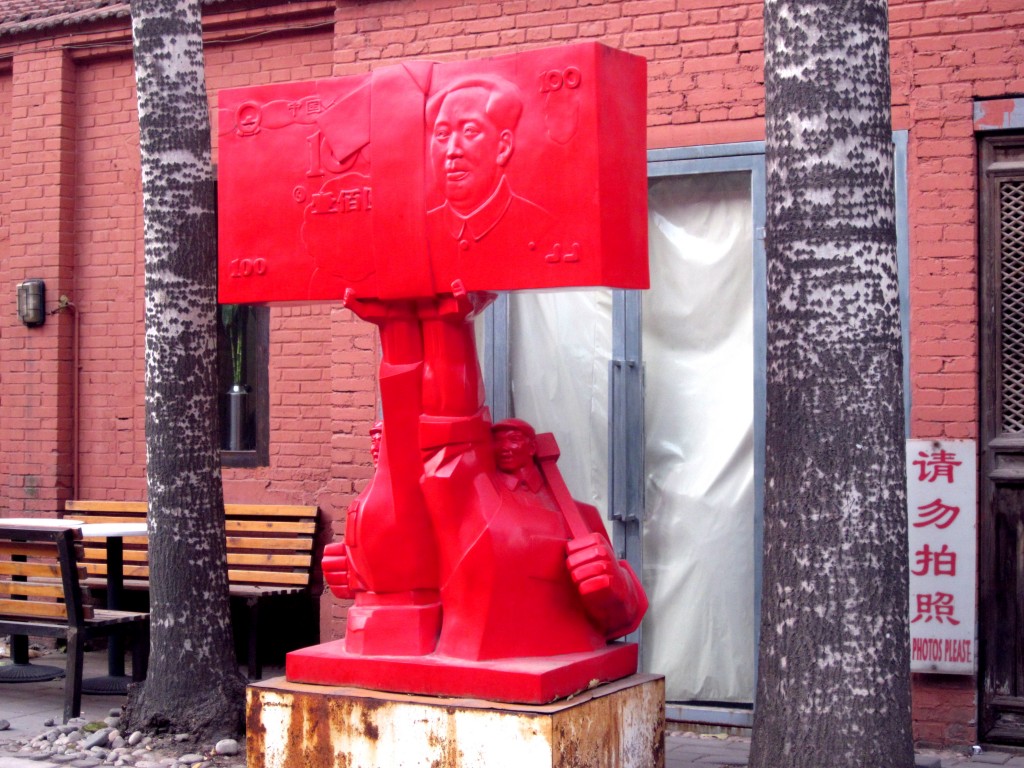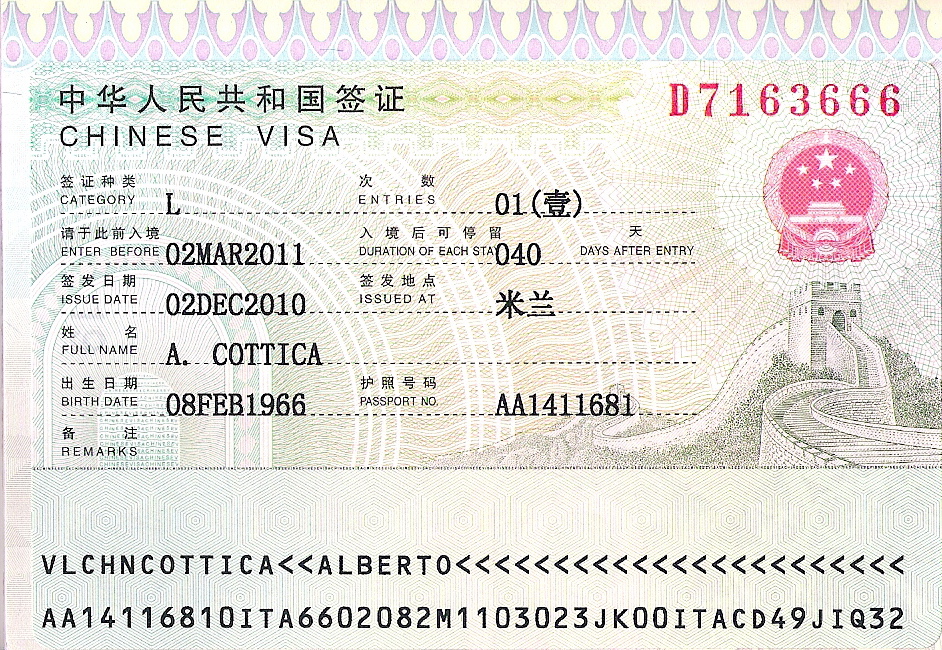
An interesting place I visited recently is 798 Art District in Beijing. It is a large industrial complex for the manufacturing of electronic components (with transistors especially important) built in the Fifties by the Chinese government in cooperation with their East German counterparts. With production discontinued in most plants starting in the Eighties, 798 has known a second life after 1995 (or 2000, as other sources say), when artists and galleries started reclaiming the abandoned buildings, attracted by the abundant availability of cheap space and by the Bauhaus-style aesthetics dictated by German engineers. In the early Noughties the district turned into an art utopia: a fascinating place where artists and gallerists live and work side by side with workers of those factories in the complex that are still churning out product. There is so much space (it is as large as a small town) that people could and did engage in oh-what-the-hell activities, and scattered the landscape with ironic Mao statues, ceramics dynosaurs, ten-meters-tall manga style warrior robots build of pieces scavenged from old cars (my favourite); and hosting performances, raves, live concerts, film festivals like New-York based Tribeca. Today 798 is by far the most important – also in an economic sense – powerhouse of the fledgling Chinese contemporary art scene. And that means business: in the course of 2007 artist Zhang Xiaogang alone sold paintings for US$ 57 million. Obviously, trendy cafés, restaurants and shops with a bohemian penchant mushroomed.
It would be fascinating to study in depth, especially now that the Visioni Urbane experiment draws to its end, with the creative spaces being delivered and turned over to the coalition of firms and associations that will run them. For now I’m going to take a few notes, based on the visit and some reading.
- Aesthetics matter. As an economist, I always thought that artists like derelict industrial spaces because they are cheap, and, being aesthetically neutral, they can be made into whatever they want, from aseptic lab to steampunk cave. But no: the statements I have collected agree that 798 attracted artists for its unique looks. To be sure, the care put in designing it by the Germans is unparalleled in contemporary industrial architecture in China (just look at the sawtooth profile of the roofs, or the large windows facing north to maximize shadowless lighting)
- Organic growth just does a better job. 798 is home to a large variety of works and organizations, but at the same time it displays a very clear aesthetic and socioeconomic coherence. It feels like a coral reef, with various species fighting and cooperating and exchanging matter and information in an endless coevolutionary dance. Top-down planning dooes not stand a chance to achieve anything like this. This is not to say that there can be no role for the policy maker in the making of an art district, but it does recommend it takes on the role of starting the evolutionary engine and monitoring thatthe system moves in the general right direction, letting it work out its own layout. An example can be found in the story of 798 itself: the event that spawned the district’s second life is the temporary occupation of one of the dismissed factories by the Beijing Central Academy of Fine Arts in 1995. The Academy only needed cheap workshop space while it relocated to a new campus, but the event did bring many artists and art students to visit the area. The dean of the Faculty of sculpure, Sui Jianguo, fascinated by the space, relocated his personal studio to 798, and he was among the first established artists to make the move.
- The economic success of an art district endangers its long-term credibility and sustainability. As corporations looking to be cool start to organize marketing events in 798, many artists lament a rapid rise in rental costs and fear excessive commercialization. To be sure, many of the pieces you’ll find in the maze of galleries have a disquieting tendency to rework in different contexts the iconography of Chinese communism: Mao statues, little red books and red stars. Why? Because (generally more sophisticated) references to Chinese communism are to be found in the work of the most successful and wealthy artists, like Zhang Fanzhi or the already quoted Zhang Xiaogang. Pressure on rental costs, of course, increases the incentive to imitation to make a quick buck, and takes away the mental space for artists and gallerists to develop new products. Many observers fear the collapse of the ecosystem now in place and the transformation of 798 into a sort of shopping mall of Chinese contemporary art.
- The district’s economic success, while in a sense too great with respect to the needs of artistic creation, is too small with respect to protect 798 from the real estate market. The area, once peripheral, is today on the strategic corridor between the city centre and its new international airport, and pressure is mounting to just bulldoze the whole thing and develop it to satisfy the housing demands of a 13 million inhabitants (and counting) city. The owner of 798 is Sevenstar, a State-owned corporation established in 2001 with what remained of the old Mao-era complex; it has responsibility for managing the buildings. There’s a clear governance problem here: the corporation’s mandate is declined in purely financial terms, so its management’s duty is to maximize financial return, without any regard for cultural significance. The alliance between it and the artists lasted only as long as the latter were the only people willing to pay a rent, however low, to occupy the derelict factories: as soon as the space became interesting for financially stronger entities, the tensions between artists and the corporation mounted. In 2005 art institutions in Beijing were able to persuade the municipal government that – in the light of the coming 2008 Olympics – the city needed a contemporary art showcase more than it needed new housing. The following year, authorities designated the area the first-ever “centralized district for cultural creativity”. No bulldozing: instead, roads were repaved, street lighting enhanced, and gentrification (and rents) sped up.
This is China: the government always has the last word. While it’s hard not to applaud its decision, the economist is left wondering whether market economy is doomed to keep art between the rock of excessive commercialization and the hard place of insufficient profitability. And this, I am afraid, amounts to saying that art economics – once stripped of explicit and hidden public subsidies and wishful thinking – is a delusional exercise, and that art and market can live in symbiosis in the short run, but when all has been said and done are incompatible.
